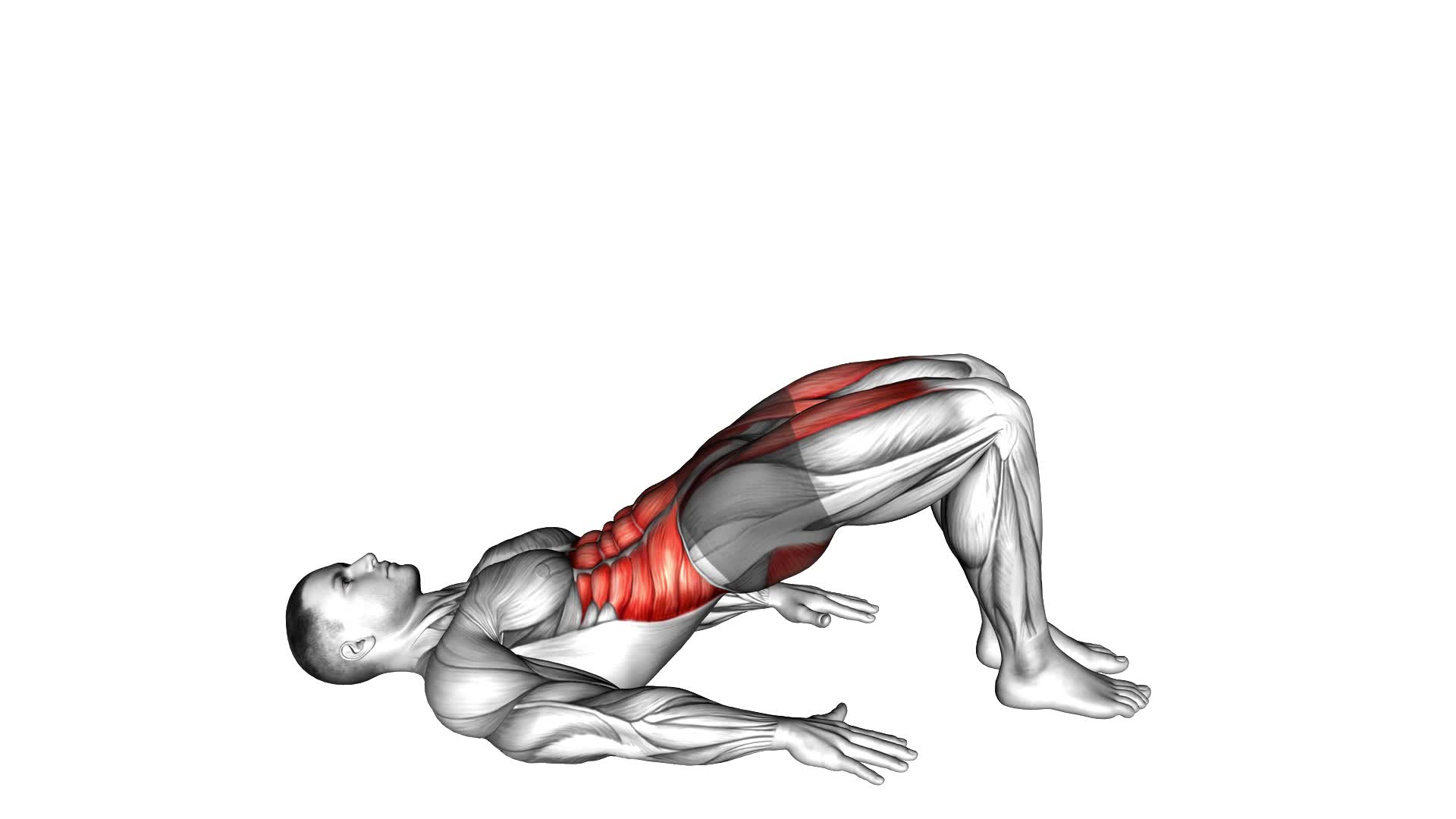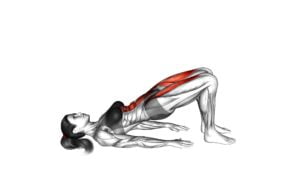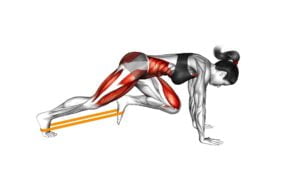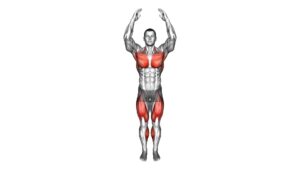Glute March – Video Exercise Guide & Tips

Are you looking for an effective exercise to target your glutes? Look no further than the Glute March!
Watch This Exercise Video
This video exercise guide will show you the proper form and technique, as well as modifications and progressions to challenge yourself.
Avoid common mistakes and get ready to amp up your workout routine with these tips.
Let's get those glutes firing and achieve your fitness goals!
Key Takeaways
- Glute March exercise targets and activates the gluteal muscles for strength training.
- It improves lower body strength, stability, and balance.
- Glute March helps correct imbalances, improves posture, and prevents injuries.
- The exercise can be modified and progressed to add resistance and challenge the glutes further.
Benefits of the Glute March
To maximize your glute strength and stability, incorporating the glute march into your workout routine can yield significant benefits. The glute march is a simple yet effective exercise that targets your gluteal muscles, providing activation and strength training. By performing this exercise regularly, you can enhance your overall lower body strength and improve your athletic performance.
One of the main benefits of the glute march is glute activation. Many people have weak glute muscles due to a sedentary lifestyle or poor exercise form. This can lead to imbalances and compensations in other areas of the body, resulting in pain or injury. The glute march specifically targets the glutes, helping to activate and strengthen these muscles. This can help to correct imbalances, improve posture, and prevent injuries.
Another benefit of the glute march is improved glute strength. Your glutes are some of the largest and strongest muscles in your body, and they play a vital role in activities such as walking, running, and jumping. By incorporating the glute march into your routine, you can increase the strength and power of your glutes, allowing you to perform these movements more efficiently and effectively.
Proper Form and Technique
Follow these steps to ensure proper form and technique for the glute march exercise. Proper form is essential for effective glute activation and muscle targeting.
- Start by lying flat on your back with your knees bent and feet flat on the ground. Place your arms by your sides, palms facing down.
- Engage your core and lift your hips off the ground, creating a straight line from your shoulders to your knees. Make sure to keep your knees aligned with your hips and ankles throughout the exercise.
- Next, lift one foot off the ground, keeping your knee bent at a 90-degree angle.
- Slowly extend your leg, pushing your heel away from your body.
- Lower your foot back to the ground and repeat on the other side.
- Focus on squeezing your glutes as you lift and lower your legs, maintaining control and stability.
- Remember to breathe consistently throughout the movement.
Modifications and Progressions
As you progress with the glute march exercise, you can introduce modifications and advanced variations to challenge your glutes even further. These modifications and progressions will help you continue to build strength and improve the effectiveness of the exercise.
One modification you can try is using resistance bands. Simply place a resistance band around your thighs, just above your knees, and perform the glute march as normal. The resistance band will add extra resistance and engage your glutes even more.
Another modification is to increase the height of the step or platform you're using. This will require your glutes to work harder to lift your leg higher. You can start with a lower step and gradually increase the height as you become stronger.
To add an advanced variation to the glute march, you can incorporate weights. Hold a dumbbell or kettlebell in each hand and perform the exercise. The added weight will intensify the workout and target your glutes even more.
Remember to always listen to your body and progress at a pace that's comfortable for you. By incorporating these modifications and advanced variations, you'll continue to challenge your glutes and see improvements in strength and muscle tone.
Keep pushing yourself and enjoy the results!
Common Mistakes to Avoid
Avoid falling into common mistakes when performing the glute march exercise. To get the most out of this exercise and prevent injury, it's important to maintain proper form.
One common mistake is allowing your hips to sag or lift too high. This can put excessive strain on your lower back and diminish the effectiveness of the exercise. Instead, focus on keeping your hips level with your torso throughout the movement.
Another mistake to avoid is rushing through the exercise. It's important to maintain control and perform each repetition with intention. By rushing, you may sacrifice proper form and not engage your glutes effectively. Take your time and focus on the mind-muscle connection to maximize the benefits of the glute march.
Additionally, be mindful of your foot placement. Placing your feet too close together can cause instability and lead to loss of balance. On the other hand, having your feet too far apart can limit the range of motion and reduce the effectiveness of the exercise. Find a comfortable stance where your feet are shoulder-width apart, allowing for proper alignment and stability.
Tips for Incorporating Glute March Into Your Workout Routine
To effectively incorporate the glute march into your workout routine, focus on maintaining proper form and engaging your glutes throughout the movement. Here are some tips to help you maximize your results and get the most out of this exercise:
- Increase Glute Activation: To target your glutes more effectively during the glute march, focus on squeezing your glutes at the top of each movement. This will help increase the activation and engagement of your glute muscles, resulting in better muscle development.
- Use Resistance Bands: Adding resistance bands around your thighs can help to further activate your glutes during the glute march. The bands provide an external resistance, making the exercise more challenging and engaging your glutes even more.
- Control Your Pace: Take your time with each step of the glute march. Slow and controlled movements will allow you to focus on engaging your glutes throughout the entire range of motion. Avoid rushing through the exercise, as this can lead to improper form and reduced effectiveness.
- Rehabilitation Purposes: The glute march can also be used for rehabilitation purposes, especially for individuals recovering from hip or glute injuries. Start with smaller steps and gradually increase the range of motion as you regain strength and stability.
Incorporating the glute march into your workout routine can help you strengthen and tone your glutes effectively. By following these tips, you can increase glute activation and use this exercise for rehabilitation purposes if needed. Remember to always listen to your body and consult with a professional if you have any concerns or specific needs. Keep pushing yourself and enjoy the benefits of a stronger and more sculpted booty!
Frequently Asked Questions
How Many Sets and Reps Should I Do for the Glute March Exercise?
To get the most out of the glute march exercise, it's important to focus on the number of sets and reps you do. While the specific numbers may vary depending on your fitness level and goals, a good starting point is to aim for 2-3 sets of 10-15 reps.
This will help you build strength and endurance in your glutes.
Can I Perform the Glute March Exercise if I Have a Knee Injury?
If you have a knee injury, it's important to modify the glute march exercise to avoid further discomfort or pain. While the glute march primarily targets the gluteal muscles, it also puts stress on the knees.
Instead, focus on alternative exercises that are easier on the knees, such as glute bridges or seated leg lifts. These exercises can still help strengthen and tone your glutes without aggravating your knee injury.
Stay motivated and take care of your body!
Is the Glute March Exercise Suitable for Beginners?
Yes, the glute march exercise is suitable for beginners. It's a great way to strengthen your glutes and improve overall lower body strength.
To make it easier, you can start by doing the exercise without any resistance bands. Focus on proper form and engage your glutes as you lift your legs. Remember to avoid common mistakes like arching your back or using momentum.
With practice, you'll be able to progress and add more challenge to the exercise. Keep going!
Can I Use Ankle Weights While Performing the Glute March Exercise?
Yes, you can definitely use ankle weights while performing the glute march exercise. Adding ankle weights can increase the resistance and intensity of the exercise, helping to strengthen and tone your glute muscles even more.
However, it's important to start with lighter weights and gradually increase as you become more comfortable and stronger.
If you prefer not to use ankle weights, there are alternative glute exercises you can try, such as lunges, squats, and hip thrusts.
Keep challenging yourself and your glutes will thank you!
How Often Should I Incorporate the Glute March Exercise Into My Workout Routine?
To maximize the benefits of the glute march exercise, it's important to incorporate it into your workout routine regularly. Aim to do the glute march at least 2-3 times per week.
This frequency will help you strengthen your glutes, improve hip stability, and boost overall lower body power.
By making it a consistent part of your workouts, you'll see better results and progress towards your fitness goals.
Conclusion
Incorporating the glute march into your workout routine can lead to numerous benefits. This includes stronger glute muscles and improved overall lower body strength. By maintaining proper form and technique, you can avoid common mistakes that might hinder your progress. It's also important to incorporate modifications and progressions to maximize the effectiveness of this exercise. So, why wait? Start incorporating the glute march into your workouts today and take your lower body strength to new heights!

Author
Years ago, the spark of my life’s passion ignited in my mind the moment I stepped into the local gym for the first time. The inaugural bead of perspiration, the initial endeavor, the very first surge of endorphins, and a sense of pride that washed over me post-workout marked the beginning of my deep-seated interest in strength sports, fitness, and sports nutrition. This very curiosity blossomed rapidly into a profound fascination, propelling me to earn a Master’s degree in Physical Education from the Academy of Physical Education in Krakow, followed by a Sports Manager diploma from the Jagiellonian University. My journey of growth led me to gain more specialized qualifications, such as being a certified personal trainer with a focus on sports dietetics, a lifeguard, and an instructor for wellness and corrective gymnastics. Theoretical knowledge paired seamlessly with practical experience, reinforcing my belief that the transformation of individuals under my guidance was also a reflection of my personal growth. This belief holds true even today. Each day, I strive to push the boundaries and explore new realms. These realms gently elevate me to greater heights. The unique combination of passion for my field and the continuous quest for growth fuels my drive to break new ground.







